- News
- Reviews
- Bikes
- Accessories
- Accessories - misc
- Computer mounts
- Bags
- Bar ends
- Bike bags & cases
- Bottle cages
- Bottles
- Cameras
- Car racks
- Child seats
- Computers
- Glasses
- GPS units
- Helmets
- Lights - front
- Lights - rear
- Lights - sets
- Locks
- Mirrors
- Mudguards
- Racks
- Pumps & CO2 inflators
- Puncture kits
- Reflectives
- Smart watches
- Stands and racks
- Trailers
- Clothing
- Components
- Bar tape & grips
- Bottom brackets
- Brake & gear cables
- Brake & STI levers
- Brake pads & spares
- Brakes
- Cassettes & freewheels
- Chains
- Chainsets & chainrings
- Derailleurs - front
- Derailleurs - rear
- Forks
- Gear levers & shifters
- Groupsets
- Handlebars & extensions
- Headsets
- Hubs
- Inner tubes
- Pedals
- Quick releases & skewers
- Saddles
- Seatposts
- Stems
- Wheels
- Tyres
- Health, fitness and nutrition
- Tools and workshop
- Miscellaneous
- Cross country mountain bikes
- Tubeless valves
- Buyers Guides
- Features
- Forum
- Recommends
- Podcast
feature
Zwift Racing: Top tips for placing higher in virtual competitions from an international Esports team captain
For many of us, Zwift racing provides the competitive motivation that we need to push ourselves to our limits. However, whether you’re an E-category racer or an A+, there’s certainly an art to it, and perhaps even more so than in the real world, you need technique as well as watts to do well! Here are our top tips for conquering Watopia and beyond.
Many of the road.cc staffers partake in virtual cycling competitions, but none are more qualified than Aaron, who a few weeks ago captained South Africa at the e-sports World champs hosted on Zwift. He's going to help us lift the lid on the secrets of smashing the metaverse, including everything from what to set your trainer difficulty at, to in-race and set-up tricks.
Before you even get on the bike...
Hydration
For Aaron and many other Zwifters, a good result starts before even stepping anywhere near a bike. Indoor training is seriously sweaty business, and so it's important that you're fully hydrated. Our top tip is to stay hydrated throughout the day (whether you're Zwift racing or not), have a bottle of electrolytes before starting an event. Make sure that you have plenty of bottles within arm's reach during, too.
> Indoor cycling — a complete guide for 2023, and everything you need to get started
Racing indoors is just like doing an outdoor event, albeit often a bit shorter. The same fuelling strategy should do the trick, so if you usually take caffeine then there's no reason to stop. A carb drink might also be necessary on longer Zwift races.
Being dehydrated isn't only uncomfortable and potentially dangerous, but as fluid loss causes the blood to thicken, the oxygen supply to your muscles can therefore decrease. Studies show that for high-intensity indoor riding you should be consuming AT LEAST one 500ml bottle of fluid per hour.
I also asked Aaron if he recommended using ice in bottles, to which the answer was no; he opts for a chilled drink out of the fridge instead.
Stay cool!
Temperature can also make a huge difference to your performance, and without the windchill to cool you, you can overheat in much lower temperatures than you might expect. To help overcome this you’re going to want a fan, and if you’re in the house then remember to turn the heating off a good few hours before you start.
We all respond differently to heat, but it's well documented that heat causes an increase in heart rate, core body temperature, skin temperature, sweat rate and blood lactate — none of which is beneficial to performance. Studies show that heat can reduce your on-bike performance by 5-7% for the same rate of perceived exertion.
> Review: Vacmaster Cardio54 Fitness Fan
Fans needn’t cost a fortune. There's certainly a huge variety, but anything is better than nothing. Even a £15 one from the local hardware store will make a huge difference.
If you want to take things one step further then a Wahoo Kickr Headwind or a Vacmaster both pack a serious punch. If you're turbo-ing in the garage or shed though, in particularly cold conditions, then you'll probably still want the fan, but perhaps stick on a pair of leg warmers to keep good circulation to your working muscles.
Drivetrain
By this point, I was pretty confident that I'd done everything in my power to prepare myself, but that was when Aaron spotted my chain...
Aaron explained that most people will be measuring their power using a smart trainer, i.e measuring at either the hub on a direct drive or at the wheel. Obviously, any power that you put in through the cranks you want to be reaching your virtual avatar, and a grubby or worn chain is going to sap those watts.
A bit of research indicates that a filthy drivetrain like mine can quite easily result in drivetrain losses in the region of 2-4%. If you look at the average A category race where you’re averaging 300 watts, that’s up to 12 watts being lost. Try improving your FTP by that much in a hurry!
> Are your chainrings and cassette worn? Here's how to tell when they need replacing
For target events, such as the World Champs, Aaron even goes as far as using a freshly waxed chain and oversized pulley wheel system, because inside there's also far less bumpiness. You can run certain derailleur cages at lower tension to further reduce drivetrain losses.
Of course, even without the watt savings, it's still worth ragging down your drivetrain as you’ll be doing the durability of your components a massive favour!
> Get your gears shifting sweetly: How to tune a rear derailleur
Whilst you're at it, also check that your gears are indexed. Cassette and frame spacing tolerances can sometimes mean that indexing differs slightly on the turbo to the wheel that you use outside.
Just like when racing outside, there’s nothing more irritating than slipping a gear, and when it comes to the sprint you really want a drivetrain that you can depend on so that you can focus purely on that all-important kick.
Clothing
Many manufacturers now make indoor-specific cycling clothing, but unless you're riding the turbo enough to justify its own set of kit then the outside stuff will do the job almost as well. In fact, lightweight, high-wicking summer clothing is a perfect choice.
Of course, unless you're in the upper echelons of Zwift racing where a jersey/base layer is mandatory, you could compete topless or in a sports bra. Garment technology now means you can draw sweat away from the body faster by wearing a single layer which should help you to stay cooler, though.
You could also consider a casquette (cycling cap) or sweatband to keep the sweat out your eyes. Just glance over a live stream of a Premier division Zwift race and you'll see they're very popular!
Sweat-proofing
However cool you are, sweating on the turbo is inevitable. Aaron suggests using two towels, one to leave over the stem and bars to soak up the dripping and another to wipe your face.
Sweat is seriously bad stuff for bikes. The number of corroded headsets and stem bolts out there thanks to perspiration is ridiculous. We haven't done the maths, but it's very likely that riding inside damages more bikes than outside.
After your session, it's also worth wiping down your bike including bar tape. Sweat has a nasty habit of getting under bar tape and festering, which not only smells unpleasant, but if left can result in some catastrophic failures of metal components!
On-bike tips
Warm-up
You've heard it all before, we know... but the importance of a warm-up cannot be understated. Zwift races go off seriously hard, and to be ready a proper warm-up is a must. This will help you not only perform your best but also reduce the risk of injury.
> How to get the most from your limited training time
Just how much can a warm-up help? Well, studies show that pre-raising core and muscle temperature (but not by so much that you overheat) by a single degree *is associated* with higher peak power and performance in the region of 2-5%.
> What is the most effective time of day to train?
This is particularly important for races that start hard, as VO2 response or post-activation potentiation (PAP) is improved. In athletes who conducted a proper warm-up, this lasted a few minutes longer than it did in athletes who didn’t warm up at all, and can also lower a rider's rate of perceived exertion in these all-important first few minutes.
A personal favourite warm-up of mine on the turbo is to ride easy (Zone 2) for 10 minutes, then do a five-minute ramp up to threshold, followed by some more easy riding and some high cadence sprints to get my heart rate up without over-fatiguing my legs. Let us know your warm-up regime in the comments section below...
Race recon
Whereas my usual Zwift strategy is to load it up, enter a race and be chewing my stem moments later, Aaron is a big fan of pre-race preparation, if you hadn't already guessed.
If you’re serious about finishing as high as possible, then a bit of research can go a long way. Riding the route beforehand so that you're familiar with the course would be the best way to go, but I'm far from organised enough to be doing that each time...
> Review: Zwift Subscription (Monthly)
If like me you're a bit time-pressed, then Zwift insider is an invaluable resource for scouting out routes to glean information such as the elevation profile that’ll tell you when attacks are likely to go, when you can sit in and when to be ready to launch something of your own.
As a general rule, a small break (2-3 riders) will have their work cut out against a decent-sized bunch (10+) if the gradient is under 3%, which is why many Zwift races come back together for a sprint. The draft should not be underestimated! Once a group is up the road you can almost always wave it goodbye...
Bike choice
The margins of victory can be tiny in Zwift races, so to get every possible advantage you may also want to consider your bike choice. Zwift offers a huge range of bikes and wheels, each with a different climbing and aero rating. However, these star rankings shown in the garage don't exactly give the full picture, so we'll once again be heading over to Zwiftinsider.
Eric Schlange's results show that bike choice can make quite the difference. The fastest bike, for example, is 130.5 seconds quicker than the slowest up the Alp for a 75kg rider at 300w. The difference between the slowest and fastest on the flat is smaller, but by no means insignificant.
For most rolling courses the 'Tron Bike' will be your best bet, or the Specialized S-Works Venge with a full Disc wheel on the flats. For climbing the S-Works Aethos and Roval Alpinist wheels rule the roost. It's up to you whether you play to your strengths or try to minimise your weaknesses; either way, try to think about at which points of the course the race is going to be won or lost.
Pen
There are plenty of myths about joining the virtual race pens in Zwift. Does the time of entry really make a difference to your start?
Aaron explains that for most Zwift races, the pen opens 30 minutes before the race starts, or 60 minutes before in the case of World Championships. His trick is to enter the pen as soon as it opens and then exit to complete his warm-up elsewhere where miles, drops and XP can be racked up. When he then rejoins the pen five or so minutes before the race start, Zwift remembers the original position (near the front).
Obviously, in smaller races this is neither here nor there, but in popular events with literally hundreds of riders subscribed, this can be the difference between making the front group or not.
Whilst in the pen, some riders will need to make sure that they're dual recording. This is when riders have to prove their power using two separate devices. Also, check that your heart rate monitor is working and connected. They're not only useful for monitoring your effort, but are actually mandatory for some results on Zwiftpower otherwise you will get disqualified.
It's also worth calibrating your turbo after your warmup. You don't want to be losing watts there!
The competition
Extra-keen people might then also look up the competition. Aaron says that if everyone weighs 20kg more than him then he might try and break away on the climb as the sprint will likely go badly. Or if there's someone with an orange tick next to their name, then it means they're verified and likely know what they're doing, so they might be worth keeping an eye on in the race.
Trainer difficulty
Trainer difficulty is a topic that regularly strikes up a conversation (just to clarify, this does NOT mean that you can put in any less power). To use the same gearing as you would outside, set your trainer difficulty to 100%. This is mandatory in some high-profile events such as World Champs.
So, is it cheating to lower it? We think not, and recommend using 50% for the majority of rides as it gives a nice balance of realism, i.e using gears but without the need to switch out your chainring.
The race
> Best indoor cycling accessories 2022 — everything you need to get started
The start
As we've said many times already, Zwift races go off hard. Some soft pedalling in the pen will get the flywheel turning to avoid having to put in the work to get it moving when the gun goes.
Aaron suggests ramping up the watts with a few seconds to go, so that when you're released you're not sitting treading water or playing catch-up. He does add that he's seen plenty of riders go too hard too early, say from 10 or 15 seconds out. This is a wasted effort as it's not moving your avatar forwards.
“Smash it out of the pen and wait to see if it settles”
The hard start means that things can often split in the first few minutes, and you don't want to be on the wrong side of one. The ideal situation is to be near the front (in the top 10 or so of most races) so that you can see what's going on, but still have some protection from riders in front of you.
On-bike position
During the race, you want to try and sit up to open up your lungs and get as much oxygen in as possible. Many super keen indoor racers will have a more 'relaxed' position on their turbo bike, with a higher front end and potentially wider bars as being aero is not a concern.
Of course, the majority of us will be using the same bike on the turbo as we use outside. In this case, just sit up and try not to hunch over the bars. It is worth remembering that it's good to do some turbo sessions focussing on your position, otherwise it can negatively impact your riding when you head back out in the real world.
Drafting
Just like outside, drafting is a key skill for saving energy and doing well in races. Riders sat behind three or more other riders can expect to be saving in the region of 30% of the watts being put out on the front.
This often means that once a gap opens to a group, it remains open unless you hit a serious gradient.
Aaron says that there's only one way to become a Zwift drafting expert, and that is practice, either by doing more races or by joining a robo pacer (formerly pace partners) as the large number of riders at a comfortable pace allows you to perfect the 'sticky draft' technique.
> The best position for drafting in a pack + video
What is sticky draft? This is the loving name given to Zwift's drafting algorithm on many a forum, and it does describe it well! Imagine you're riding closely behind a group of your mates, they're riding at 250 watts on the front and you're riding at 200 watts in the wheels. Sticky draft means that you might be able to drop your power to, say 180w, without losing the wheel.
Perfecting this technique is key to doing well in competitive races, as it allows you to conserve more energy, leaving you fresher for a climb, attack or sprint finish.
Don't yo-yo
The yo-yo technique, as seen by many a newbie Zwifter, is quite simply a recipe for disaster. This is when a rider goes to hard, ends up on the front, then backs off the power (too much) and falls back through the group before repeating the process.
Not only if this an inefficient way of riding, but it's only going to be a matter of time before you get caught out. Someone could quite easily attack as you're going backwards, and with that extra momentum there's only going to be one winner.
Again, the solution to this is practice, awareness and early intervention. Practice the technique before races in robo pacer/group rides, be aware if/when you're doing it and try to ride at consistent power and try to predict what the group is going to do, and monitor your effort to try and stay in the wheels and consistent position.
Where to sit in the "blob"
As we've previously eluded to, you want to be near the front but not at the front in most instances. We can't tell you whether to follow moves, attack or sit in as every race scenario is different, as is the condition of your legs.
What we can say is that the vast majority of Zwift races start off with a large group. This gets whittled down a bit on ascents and during attacks, and then there's a sprint at the end. In an ideal world, you won't hit the front until about one metre before the line, just like a World Tour Sprinter.
You can still super tuck on Zwift!
> Hitting 100kph on a bike — what does it take to break this elusive cycling speed barrier?
The UCI may have banned the super tuck in real-life racing, but in the Metaverse, it's still very much allowed. If you stop pedalling whilst travelling down a gradient of -3 degrees or steeper at 57kph+ then you will automatically super tuck.
This is useful for conserving energy, mopping your brow, having a swig of drink and getting ready for the next part of the race, whatever that might be. Whilst in super tuck it should be possible to stick with the blob but Aaron suggests staying alert and not zoning out!
Aaron explains that he's seen many riders fall victim to the super tuck, thinking that the hard work has been done on the ascent only to lose touch with a group on a descent in a momentary lapse of concentration. Look out for small rises on the descent that will make your rider sit up and become a parachute and start pedalling again before the road flattens off so that your flywheel is up to speed and you don't start falling backwards.
When to sprint
As a general rule, the sprint will open up with two to three hundred metres to go, but look out for riders going early by keeping an eye on if any w/kg numbers turn orange over on the righthand side.
Aaron notes that there seems to be an increasing trend for riders to go early in Zwift races, starting their kick with 1km or so to go. The key is to be on the ball and look out for fast wheels to get on, even better if you have the momentum and are already heading through the pack when something goes.
Powerups
In races, the most common powerups you'll find are the feather, aero boost and 'the truck', which offers an additional drafting boost. Aaron suggests saving them for areas where you are weakest; for example, as a climber he always tries to save up an aero or drafting boost for the finish where other riders have an advantage.
Putting these tips into practice
Zwift races hurt, and if they don't then you're probably not doing them properly. The upside is that makes them excellent training when built into a proper plan. Aaron and I went on to discuss the legitimacy of Zwift racing, and I was surprised to find the lengths Zwift goes to in order to prevent cheating.
In the upper echelons of racing, ZADA (Zwift Anti Doping Agency) go through the dual recorded data to weed out cheats, heart rate monitors must be worn, weigh-ins and height measurements must be filmed and for the World Championships, a brand new turbo was delivered to each rider!
In the lower tiers, yes, there is some cheating, but likely less than you expect. There are riders out there that really are mind-bogglingly strong, and if they repeatedly do well then Zwifts category enforcement will means that they can often only enter the A category events.
At the end of the day, it is only training for most of us, and it's not like it's a completely level playing field outdoors. TT results can be influenced by money, road races and crits by sheer luck, and we'll stop before we open the can of worms that is PED's, which are largely untested for at amateur level.
Armed with my new-found knowledge I headed off to enter a race. With Aaron screaming at me, I did indeed do better than I just about ever have done before. In my opinion, practising drafting is a must, it's an area that I thought I was ok but every time I looked over at Aaron's power he would be doing less, even on the flats!
Seemingly, as with anything cycling-related, there’s no replacement for practice, I'd better get some virtual miles in before next season!
Do you have any other tips and tricks that you think we’ve missed? Drop them down in the comments section below...
Jamie has been riding bikes since a tender age but really caught the bug for racing and reviewing whilst studying towards a master's in Mechanical engineering at Swansea University. Having graduated, he decided he really quite liked working with bikes and is now a full-time addition to the road.cc team. When not writing about tech news or working on the Youtube channel, you can still find him racing local crits trying to cling on to his cat 2 licence...and missing every break going...
Latest Comments
- David9694 8 hours 17 min ago
Car crashes outside Poundland in Abingdon town centre...
- ktache 8 hours 32 min ago
I'm impressed by my DX1000, the keys look difficult for picking, though I'd like to seethe LPL having a go at one. And it definitely feels the part...
- dubwise 9 hours 46 min ago
So cyclists will be punished far heavier than killer drivers. Sums up the fkd up UK.
- HLaB 9 hours 59 min ago
I've done the 312 and other closed roads events like the Etape Caledonia and each time there is bad press like this in advance but on the day the...
- Rendel Harris 9 hours 59 min ago
It's not that surprising that Mr GrumpyGobshite hasn't seen the 20mph limit "stuck too [sic] in 47 years" as it was only reintroduced in 2004, it...
- Pub bike 10 hours 15 min ago
Spiral wound cables can expand and contract and possibly help with brake modulation, as well as make tighter bends. ...
- Burnsy Bhoy 11 hours 36 min ago
My TL200 rear light stopped working after 14 months - it seems IP ratings arent what they say on the tin! I have tried different brands and all...
- OnYerBike 17 hours 47 min ago
I've no idea what the situation is here, but I've seen plenty of "under construction" cycle lanes where there are only signs/barriers around the...
- the little onion 17 hours 54 min ago
whereas the whole point is that they didn't hit you this time
- Tom_77 18 hours 8 min ago
AIUI an entering-circulating accident [sic] would be when the vehicle entering the roundabout fails to give way to the vehicle circulating.
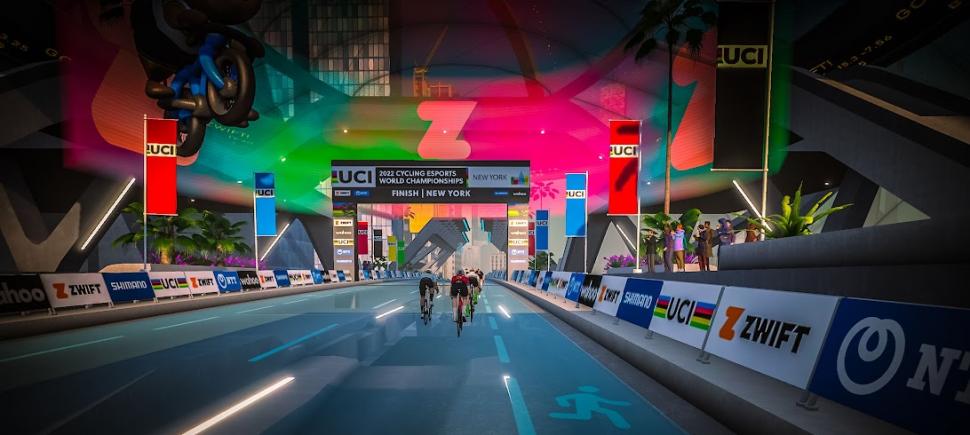

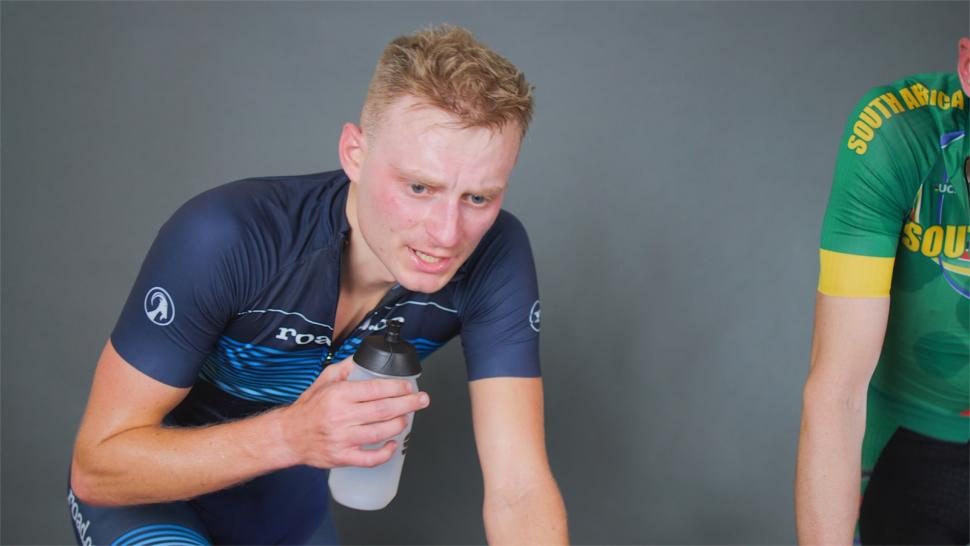
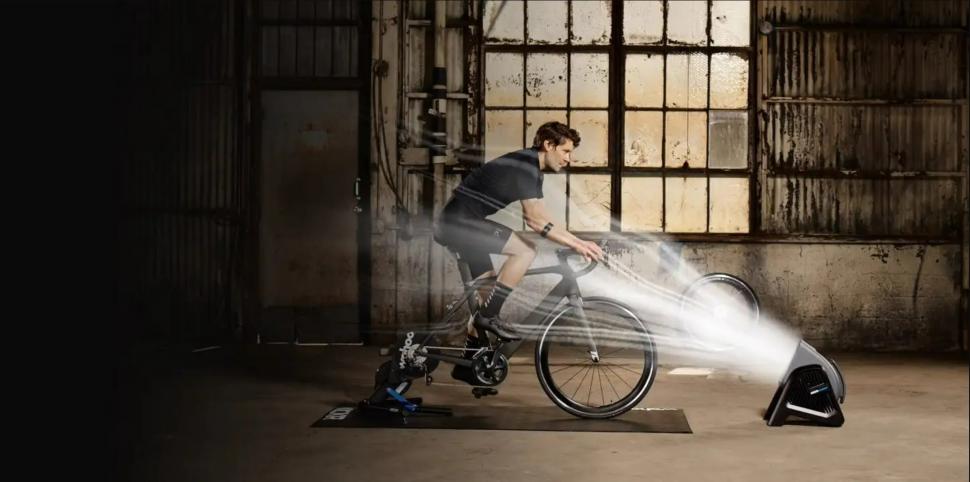
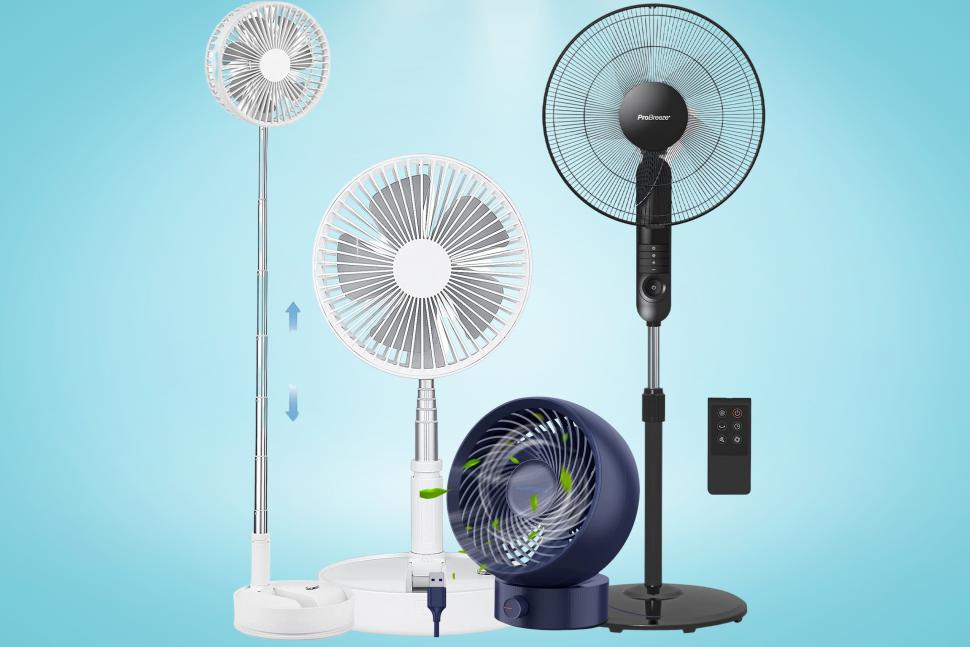
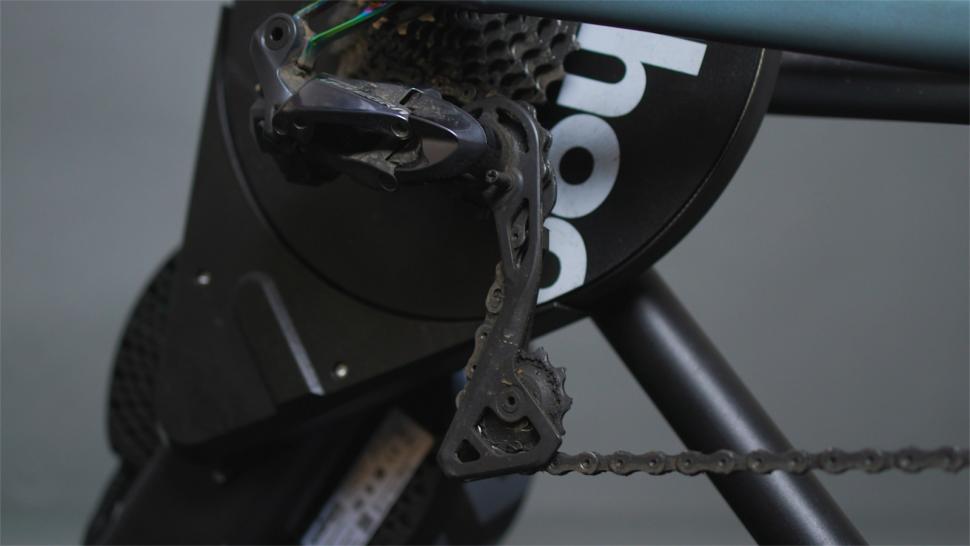
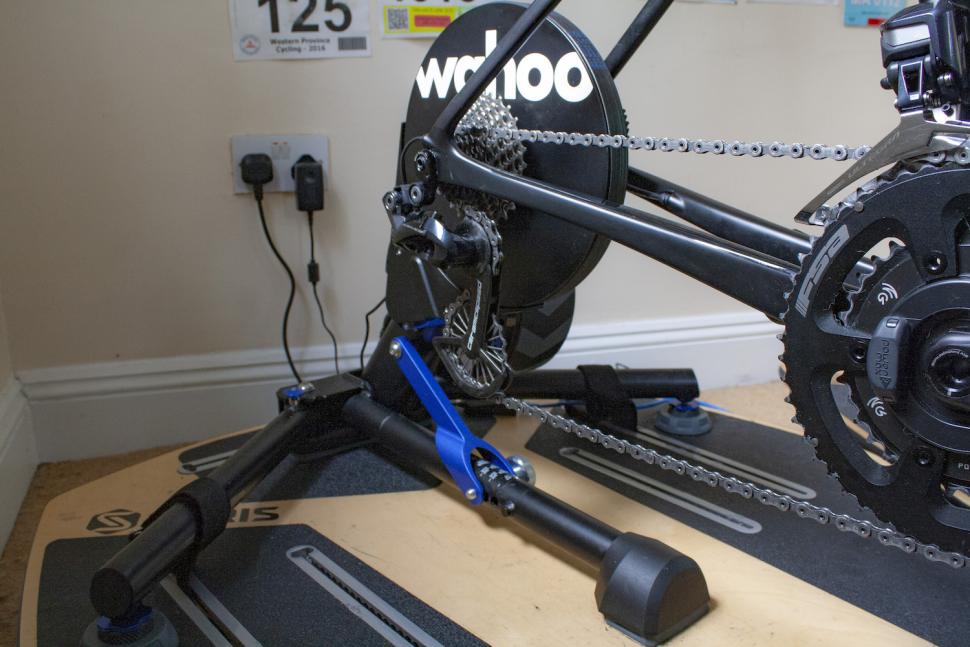

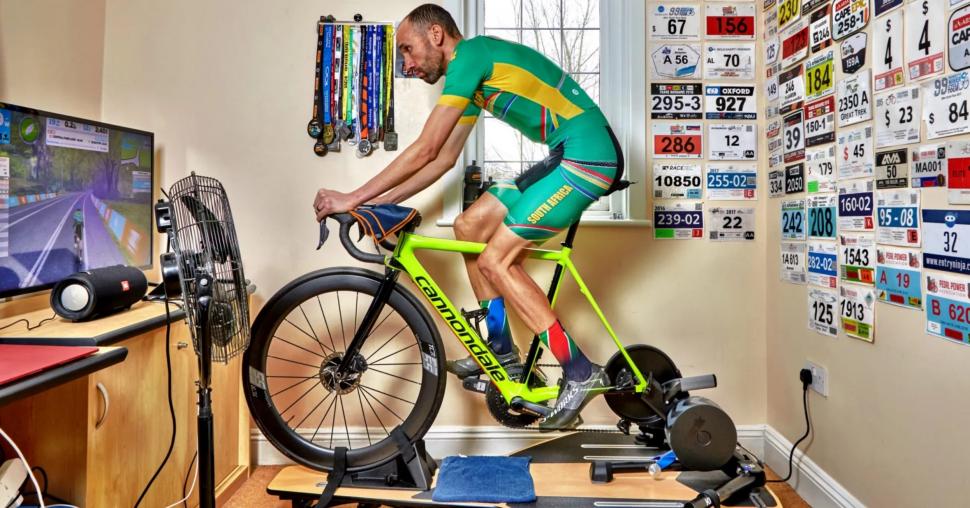
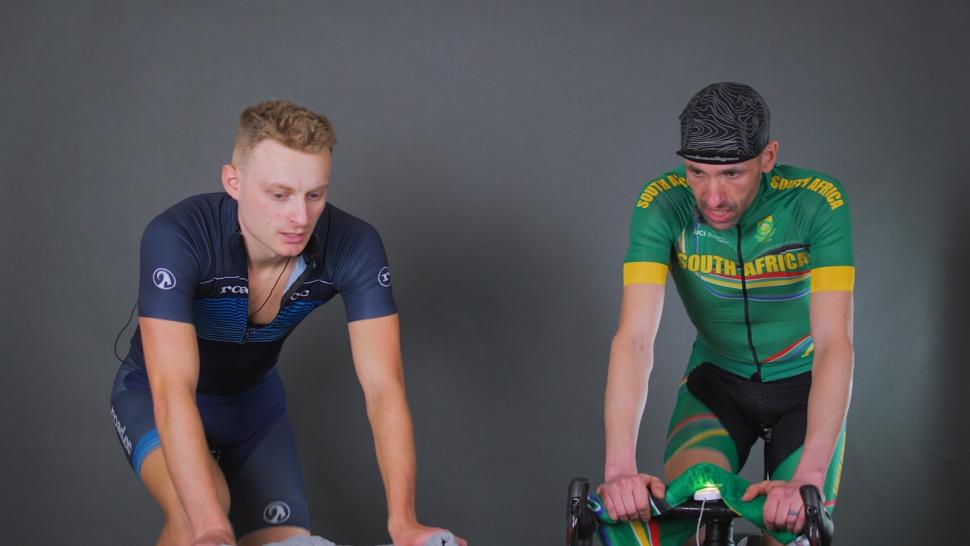

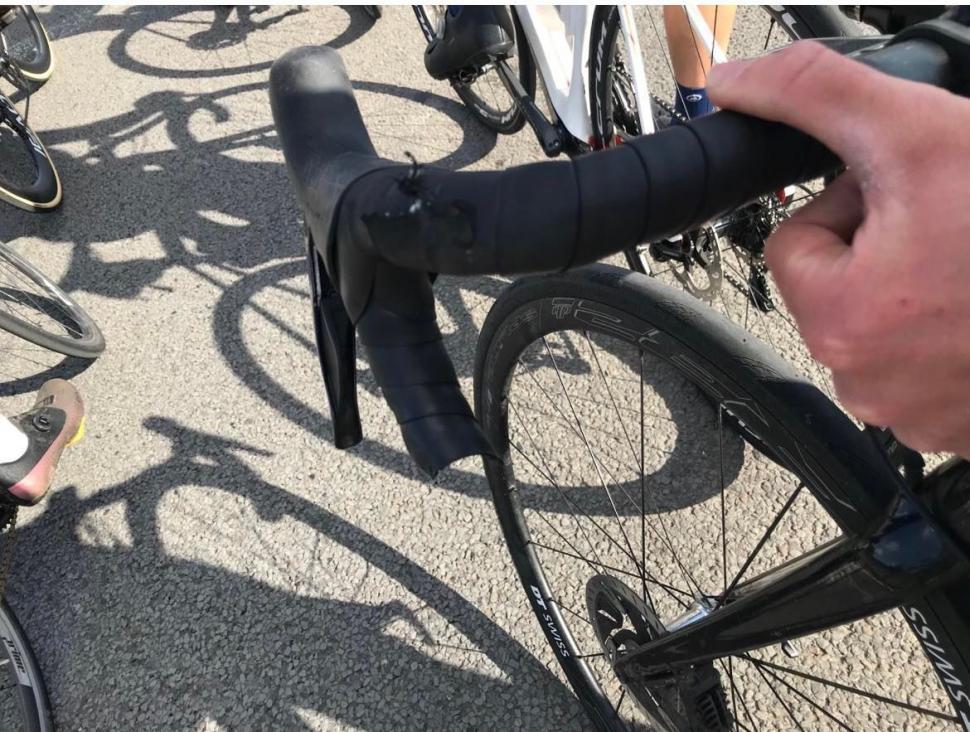


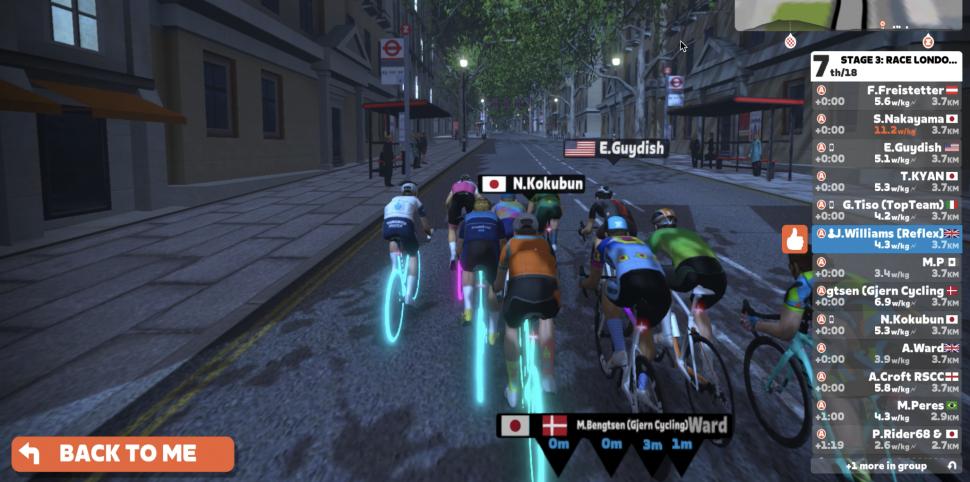
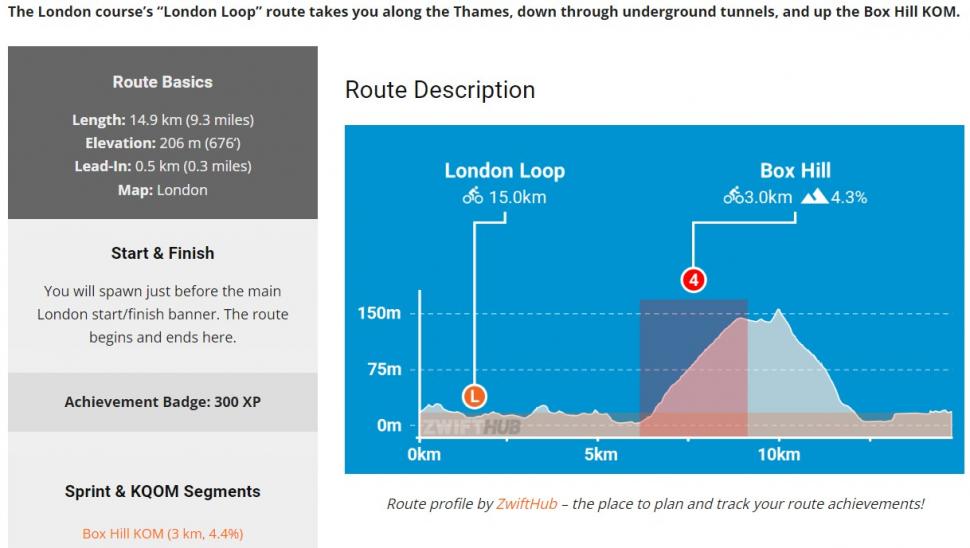

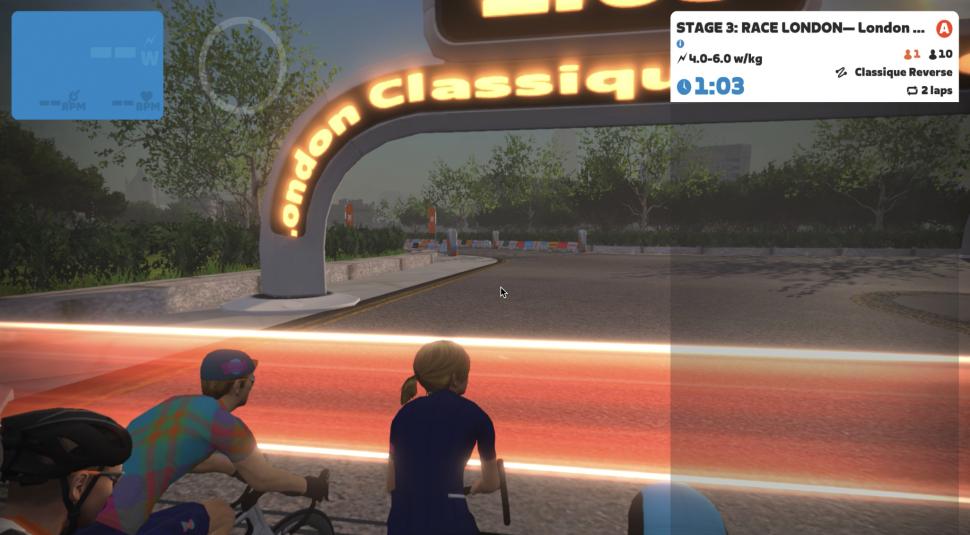
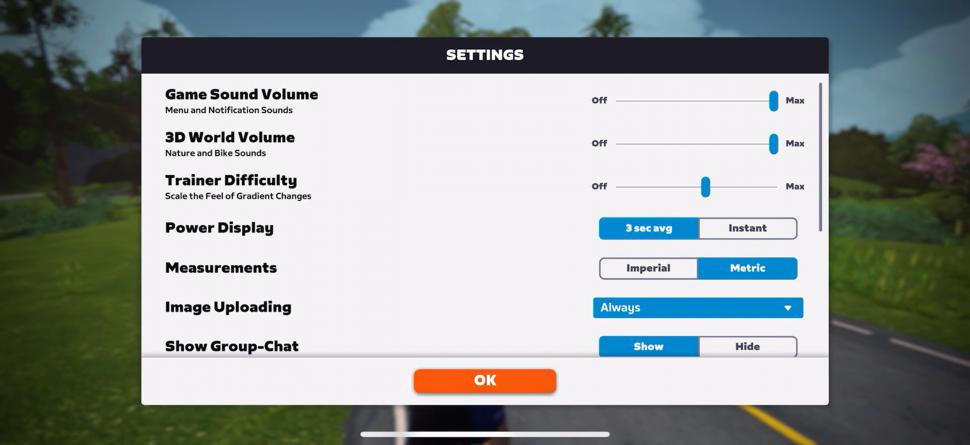
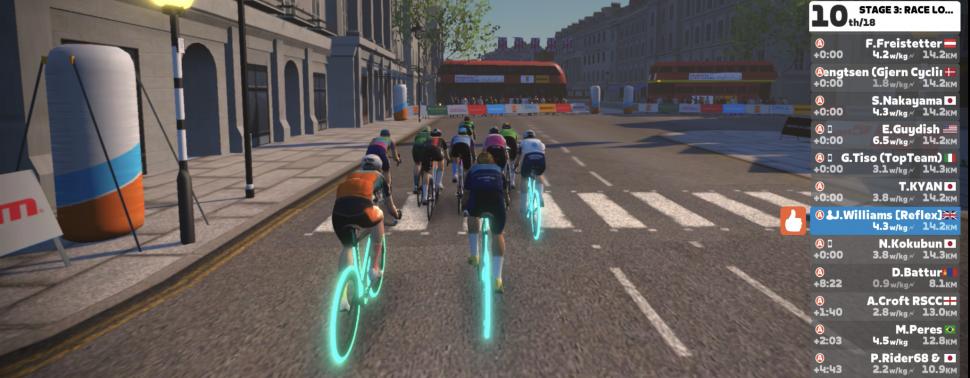




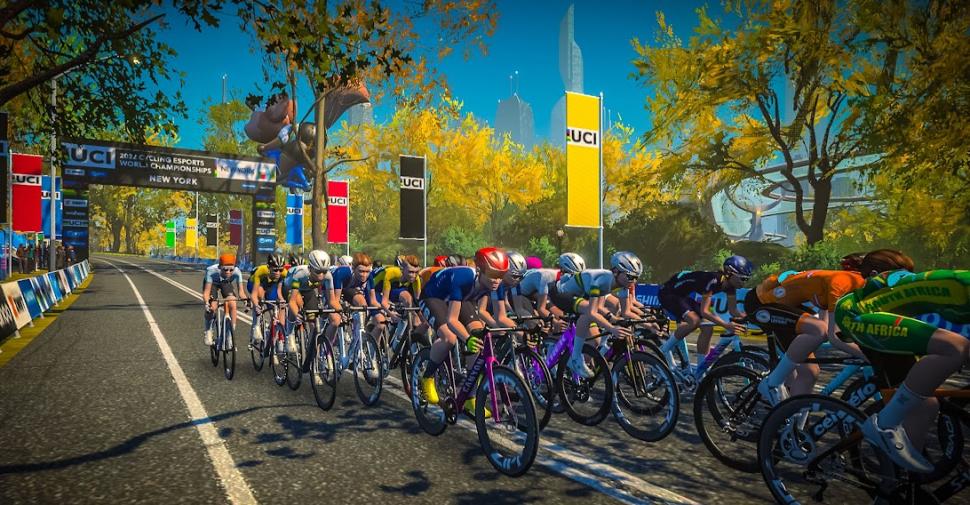


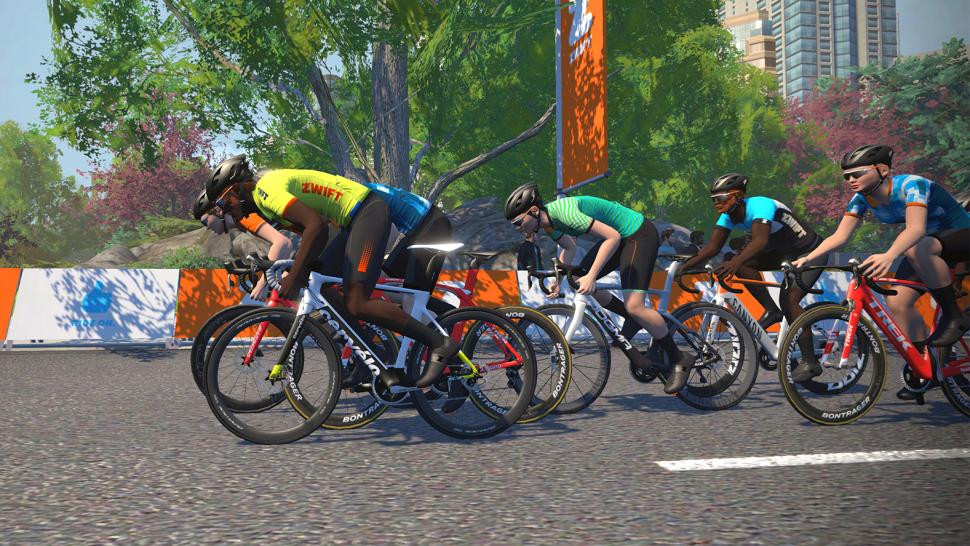

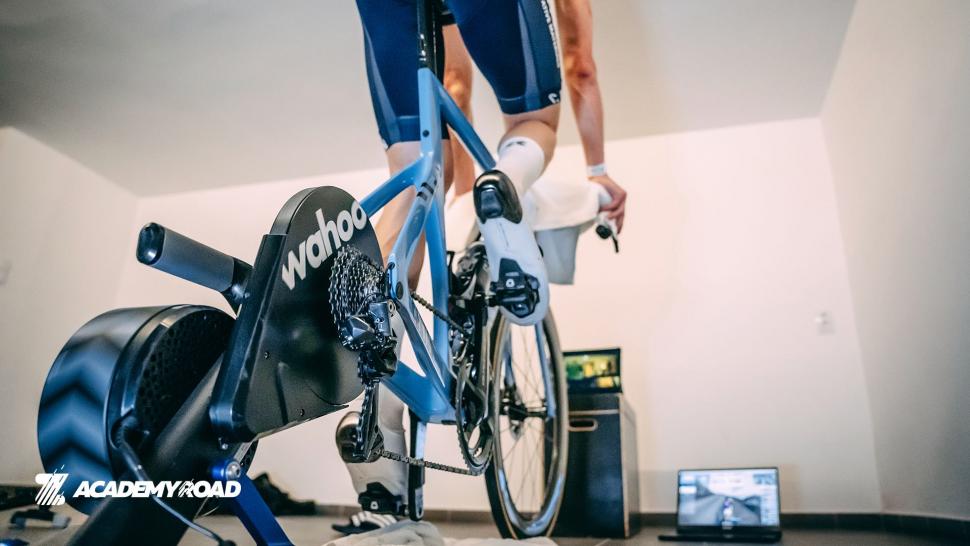
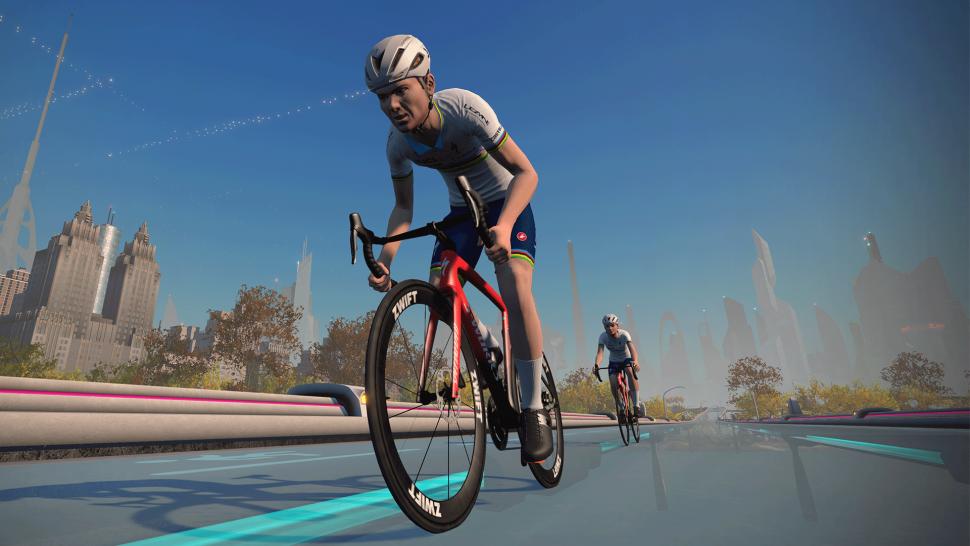
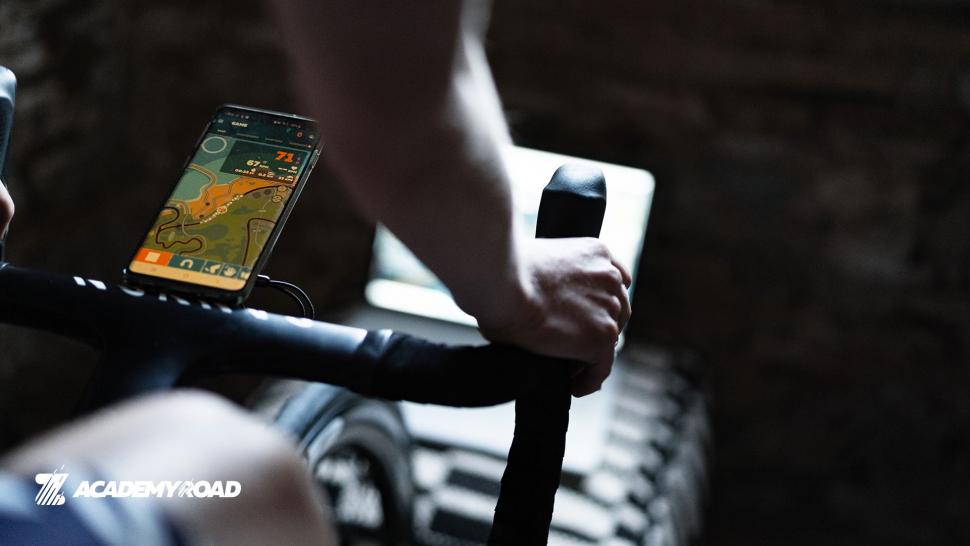
Add new comment
3 comments
My avatar seems to like sitting right on the edge of the group in the wind! How can he be encouraged to stay in the middle?
i also struggle with crests into downhills... I often get dropped here as a lighter rider. Any tips other than spin up some power in anticipation?
Generally I end up yo yoing up and down the group til I eventually fall off the back. I guess practice will help.
Practice is unfortunately the way forwards, Pace partner/robo pacer rides are a great help for this as they're not trying to drop you like other people in a race. Try doing some on rolling routes rather than sticking to the flats like lots of other Zwifters!
Crests into downhills - aim to sit nearer the front of the bunch, this gives you more room for slipping backwards and avoids the elastic getting stretched when the front of the bunch starts travelling faster than the rear, this is why we often see sprinters sitting right near the front on hilly stages in World Tour races. And keep the power on the pedals over the tops of hills until you're up to speed on the descent - this may also help to improve your avg speed outside too
Hope this helps and let us know how you get on!
Thanks Jamie, good advice, will give it a try!